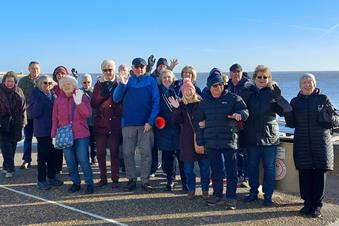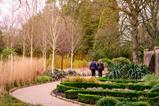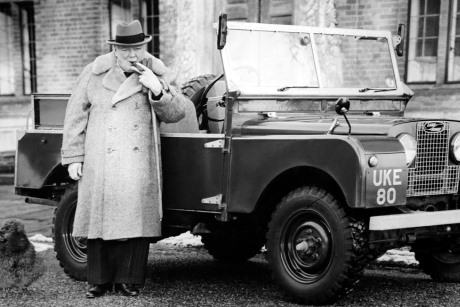
To mark the recent release of the film, Darkest Hour, which focuses on Sir Winston Churchill’s early days as Prime Minister, we look at a selection of attractions with links to the wartime PM.
Sir Winston Churchill was born in 1874 and died in 1965. He is famously known for being the British Prime Minster during World War Two (he was Prime Minister from 1940 until 1945 and again from 1951 to 1955). Various locations around England have links to him, many of which groups can visit.
The recent film, Darkest Hour, stars Gary Oldman and looks at his time as Prime Minister during 1940. Here, we pick out a few attractions for groups to further their interest and knowledge on Winston Churchill.
London, Oxfordshire and Kent
Groups visiting London on a Churchill or World War Two themed trip should pay a visit to the Churchill War Rooms where you'll be able to discover the Cabinet War Rooms and Churchill's secret underground bunker. Visitors to the museum will be able to explore the life and legacy of the late Prime Minister and discover how World War Two was led to victory for Britain due to the efforts of Churchill. Private tours can be arranged at the museum too, although GTOs should note they are recommended for smaller groups of ten.
Blenheim Palace in Oxfordshire is where Sir Winston Churchill grew up, and groups visiting will be able to set foot in the very bedroom in which he was born. There is also a permanent Churchill exhibition which looks at his life. Entry to the exhibition include admission to the palace, gardens and park and includes Churchill artefacts such as letters, photographs and excerpts from some of his famous speeches. Groups are very welcome at Blenheim and group organisers can email groups@blenheimpalace.com for information on tours, talks and catering.Take the ‘Walk in Churchill’s Footsteps’ Trail, too. Follow the trail throughout the Palace, Park and Formal Gardens to find Sir Winston Churchill's favourite and most cherished places. Plus discover a dedicated exhibition within the Palace.
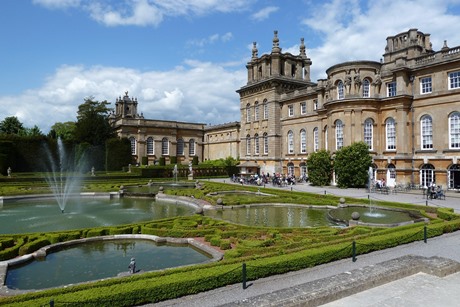
Pictured: Blenheim Palace.
The Houses of Parliament plays a major role in the legacy of Sir Winston. To mark the release of the film, on various dates throughout January, there will be themed Churchill tours, and dining experiences. Groups visiting the House of Parliament can benefit from a number of offerings such as ticketed tours available for groups with ten or more, afternoon teas, and audio guides.
Sir Winston Churchill died in 1965, and when visiting Westminster Abbey, just inside the west entrance you'll find a marble memorial stone which was unveiled by the Queen after he died. His actual resting place is near to Blenheim Palace.
Chartwell in Kent is known as the family home of Churchill, where he and his wife and children lived. Throughout January and February there will be an exhibition which focuses on his wife Clementine, as well as a trail which looks at her life and hobbies. When visiting you will get to see various objects such as pictures and books from the Churchill's time living at the house, which is very much in the state it was when he lived there. You'll also see Clementine’s Rose Garden and the playhouse built for his youngest daughter. Groups with 15 or more people are welcome at Chartwell and group tours and dining packages can be arranged.
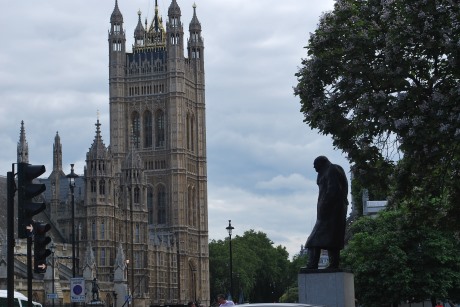
Pictured: Statue of Churchill.
Statues to look out for in London
Winston Churchill spent a lot of time in London and when visiting you may spot a fair few statues of the PM. Firstly, in Parliament Square you’ll find and elderly statue of Churchill, facing the Houses of Parliament.
Other statues resembling him can be seen on Bond Street on a bench next to a statue of President Roosevelt, in Woodford Green, plus a bust can be seen on Wanstead High Street.
A statue of Churchill also stands at the entrance to the House of Commons. This statue is off limits to the public except by pre-arranged tour. And when visiting the Guildhall, you will also see a statue of the statesman in an armchair which Churchill actually unveiled himself.










